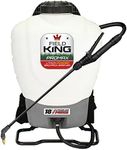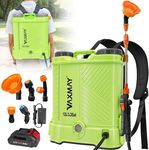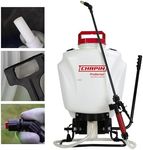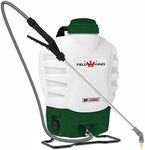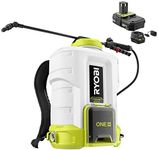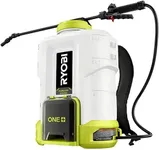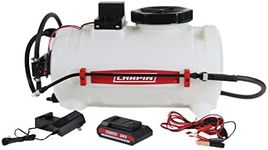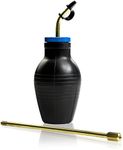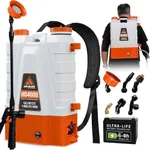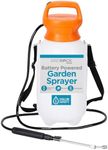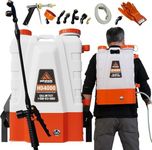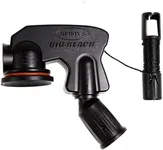Buying Guide for the Best Battery Operated Sprayers
Battery-operated sprayers are a convenient and efficient tool for various spraying tasks, such as gardening, pest control, and cleaning. When choosing the right battery-operated sprayer, it's important to consider several key specifications to ensure it meets your needs. Understanding these specs will help you make an informed decision and select a sprayer that is best suited for your specific requirements.Battery CapacityBattery capacity, measured in ampere-hours (Ah), indicates how long the sprayer can operate on a single charge. This is important because it determines the duration of use before needing to recharge. Lower capacity batteries (e.g., 2-4 Ah) are suitable for small tasks and short durations, while higher capacity batteries (e.g., 5-10 Ah) are better for larger areas and extended use. Consider your typical usage duration and area size to choose the right battery capacity.
Tank SizeTank size refers to the volume of liquid the sprayer can hold, usually measured in liters or gallons. This is important because it affects how often you need to refill the tank during use. Smaller tanks (e.g., 1-2 liters) are lightweight and easy to handle, ideal for small gardens or spot treatments. Larger tanks (e.g., 5-10 liters) are better for extensive areas but can be heavier and more cumbersome. Choose a tank size based on the scale of your spraying tasks and your ability to manage the weight.
Spray PressureSpray pressure, measured in pounds per square inch (PSI), determines the force at which the liquid is expelled from the sprayer. Higher pressure (e.g., 40-60 PSI) is useful for reaching longer distances and ensuring thorough coverage, especially for pest control or cleaning tasks. Lower pressure (e.g., 20-30 PSI) is sufficient for gentle applications like watering plants. Consider the type of spraying you will be doing to select the appropriate spray pressure.
Nozzle TypesNozzle types refer to the different spray patterns and adjustments available on the sprayer. This is important because it allows you to customize the spray for different tasks. Common nozzle types include adjustable, fan, and cone nozzles. Adjustable nozzles offer versatility for various applications, fan nozzles provide wide coverage for large areas, and cone nozzles are ideal for targeted spraying. Think about the specific tasks you will be performing and choose a sprayer with the appropriate nozzle options.
Weight and ErgonomicsWeight and ergonomics refer to the overall design and comfort of the sprayer during use. This is important because it affects how easy and comfortable the sprayer is to handle, especially for extended periods. Lightweight sprayers are easier to carry and maneuver, while ergonomic designs with padded straps and handles reduce strain and fatigue. Consider your physical strength and the duration of use to select a sprayer that is comfortable and manageable for you.
Durability and Build QualityDurability and build quality refer to the materials and construction of the sprayer. This is important because it affects the longevity and reliability of the sprayer. High-quality materials like stainless steel and heavy-duty plastics are more resistant to wear and tear, ensuring the sprayer lasts longer. Look for sprayers with robust construction and positive reviews on durability to ensure you are investing in a reliable product.
